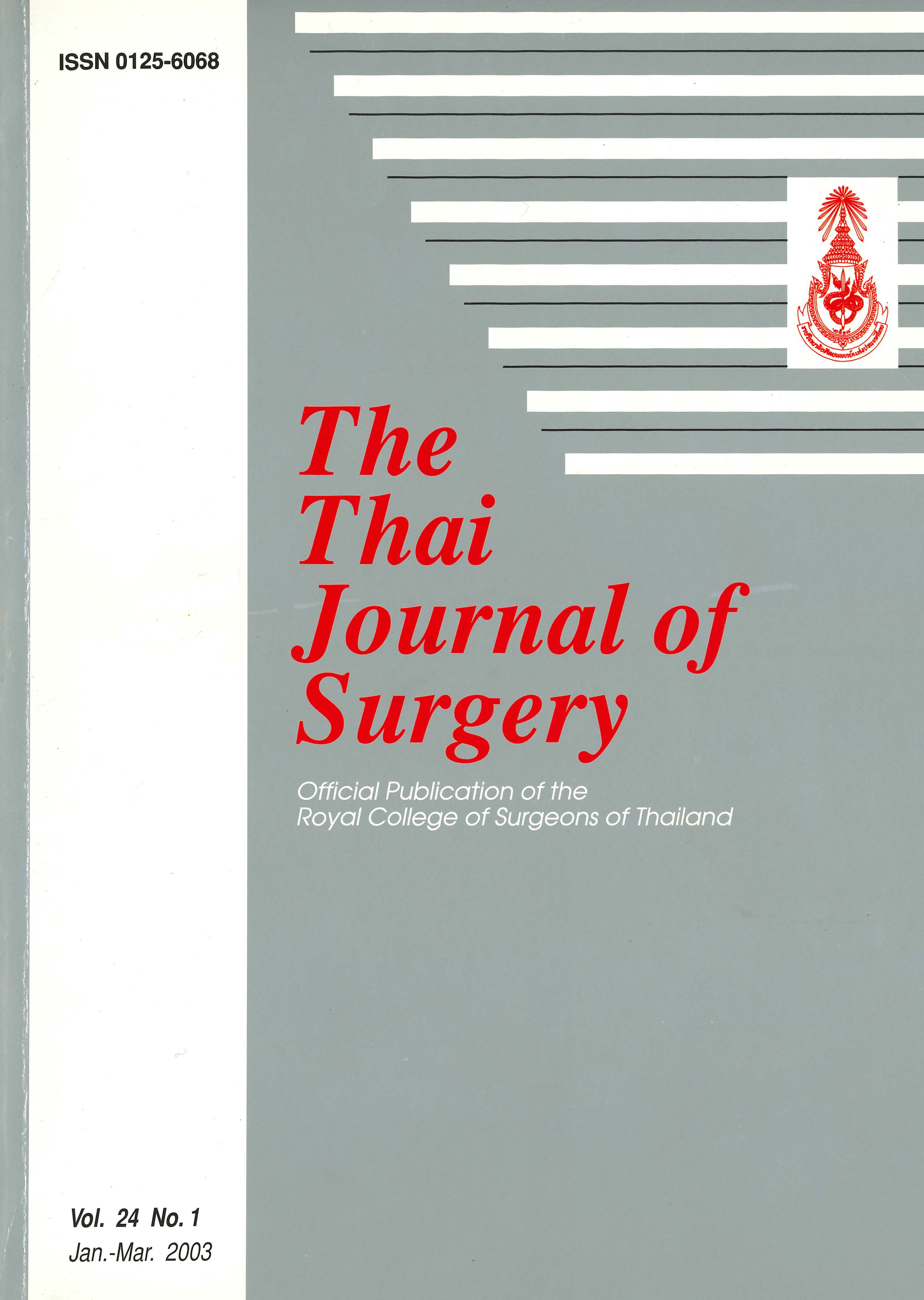The Accuracy of Predictive Parameters for The Presence of Common Bile Duct Stones
Abstract
Background: Common bile duct stones (CBD stones) are the most common cause of obstructive jaundice and cholangitis. Many technological refinements have been made in radiology, endoscopy and clinical laboratory testing that improve the diagnosis and evaluation of patients with CBD stones. This study was designed to determine the accuracy of the predictive parameters for preoperative diagnosis of CBD stones.
Methods: From January 1997 to September 2002, the data of 244 patients who underwent preoperative ERCP with a high index of suspicion for CBD stones based on clinical, biochemical and ultrasonographic criteria were evaluated.
Results: A raised serum alkaline phosphatase level was found to be of highest sensitivity (87%) but of low specificity (26%) indicator for CBD stones. Ultrasonography yielded the highest specificity (92%), the positive predictive value was 85 per cent and likelihood ratio positive of 6.48 for CBD stone. The combination of a raised serum alkaline phosphatase and dilated CBD on ultrasonography increased sensitivity to 91 per cent. The combination of finding CBD stone on ultrasonography and pancreatitis increased the specificity to 99 per cent for predicting presence of CBD stone.
Conclusions: A raised serum alkaline phosphatase level, CBD stone finding on ultrasonography, dilated CBD on ultrasonography and pancreatitis could be used as criteria for selective preoperative ERCP or cholangiogram in patient undergoing cholecystectomy.
References
2. Leitman IM, Fisher ML, Mc Kinley MJ, Rothman R, Ward RJ, Reiner DS, et al. The evaluation and management of known of suspected stones of the common bile duct in the era of minimal access surgery. Surg Gynecol Obstet 1993; 176:527-33.
3. Fink AS. Current dilemmas in management of common duct stones. Surg Endosc 1993; 7: 285-91.
4. Diliberto JP, Marks JW, Schoenfield J. Classification and pathogenesis of gallstones, In: Braasch JW, Tompkins RK, editors. Surgical Disease of the Biliary Tract and Pancreas. Chicago: Mosby Year - Book; 1994.
5. Kelly TR, Gallstone pancreatitis pathophysiology. Surgery 1976; 80:488-92.
6. Acosta JM, Ledesma CL. Gallstones migration as a cause of acute pancreatitis. N EnglJ Med 1984; 290: 484-7.
7. Reiss R, Deutsch AA, Nudelman I, Kott I. Statistical value of various clinical parameters in predicting the presence of choledochol stones. Surg Gynecol Obstet 1984; 159: 273-6.
8. Neoptolomos JP, London N, Bailey I, et al. The role of chemical and biochemical criteria and endoscopic retrograde cholangiopancreatography in the urgent diagnosis of common bile duct stones in acute pancreatitis. Surgery 1986; 100: 732-42.
9. Abboud PA, Malet PE, Berlin JA, et al. Predictors of common bile duct stones prior to cholecystectomy: a meta- analysis. Gastrointest Endosc 1996; 44: 450-5.
10. Kakos GS, Tompkins RK, Turnipseed w, et al. Operative cholangiography during routine cholecystectomy: a review of 3012 cases. Arch Surg 1972; 104: 484-8.
11. Shively EH, Wieman TJ, Adams AL, et al. Operative cholangiography. Am J Surg 1990; 159: 380-4.
12. Hauer-Jensen M, Karesen R, Nygaard K, et al, Prospective randomized study of routine intraoperative cholangiography during open cholecystectomy: long-term follow-up and multivariate analysis of predictors of choledocholithiasis. Surgery 1993; 113: 318-23.
13. Shively EH, Wieman TJ, Adams AL, Rommis RB, Garrison RN. Operative Cholangiography. Am J Surg 1996; 159: 380-4.
14. Fink AS. To ERCP or not to ERCP: that is the question. Surg Endosc 1993; 7: 375-6.
15. Surick B, Washington M, Ghazi A. Endoscopic retrograde cholangiopancreatography in conjunction with laparoscopic cholecystectomy. Surg Endosc 1993; 7: 388-92.
16. Rijina H, Borgstein PJ, Meuwissen SGM, et al. Selective preoperative endoscopic retrograde cholangiopancreatography in laparoscopic biliary surgery. Br J Surg 1995: 82:1130-3.
17. Lacaine F, Corlette MB, Bismuth H. Preoperative evaluation of the risk of common bile duct stones. Arch Surg 1980; 115:1114-6.
18. Barkun AN, Barkun JS, Fried GM, et al. Useful predictors of bile duct stones in patients undergoing laparoscopic cholecystectomy. McGill Gallstone Treatment Group. Ann Surg 1994; 220: 32-9.
Downloads
Published
How to Cite
Issue
Section
License
Articles must be contributed solely to The Thai Journal of Surgery and when published become the property of the Royal College of Surgeons of Thailand. The Royal College of Surgeons of Thailand reserves copyright on all published materials and such materials may not be reproduced in any form without the written permission.



